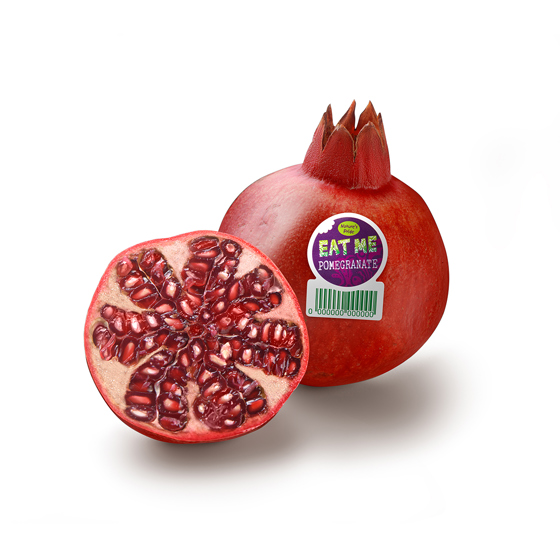Storage advice
You can store pomegranates for a few days outside the fridge.
It's all in the seeds

The word pomegranate is derived from the Latin “pomum granatum”. Pomum refers to the apple shape, while granatum means ‘seeded” and references the many tasty seeds in the fruit. The fruit was also known as the "apple of Grenada" in early English.
The tough exterior protects the small pomegranate seeds very well. These seeds are surrounded by red, transparent pulp. When you slice open a pomegranate, you will find a membrane that holds all the seeds together. This membrane has a bitter taste and is not the nicest part of the fruit. The skin is not edible either. What is left are those delicious juicy, tangy seeds. Too much trouble getting out all the seeds? EAT ME also offers ready peeled pomegranate seeds.
Pomegranate seeds make a wonderful addition to many different recipes. They are often used in compote but bring some zing to desserts and cakes too. And the seeds add a decorative and tasteful touch to salads and desserts.
Hold the pomegranate firmly and cut off the top. Cut through the skin over the segments. Break open the fruit and remove the seeds. Pomegranate seeds can be eaten as they are, added to a salad or blended.


You can store pomegranates for a few days outside the fridge.
Vitamin B6 may not be the first vitamin that comes to mind. But one that you need every day, and of which the pomegranate is a source. For example, vitamin B6 contributes to the formation of red blood cells. The fruit is also a source of another lesser known vitamin, K. It helps you to return to normal blood clotting. And don't forget your minerals, such as copper. This promotes your energy metabolism, and the pomegranate is also a source of this.
EAT ME pomegranates are harvested in various regions around the world, such as South America, South Africa, the Middle East and South Europe. It takes 7-8 years before pomegranate shrubs are ready for harvesting. But then growers can benefit from the yield for 25 years. As soon as the skin takes on its characteristic red hue, the harvest can begin.
